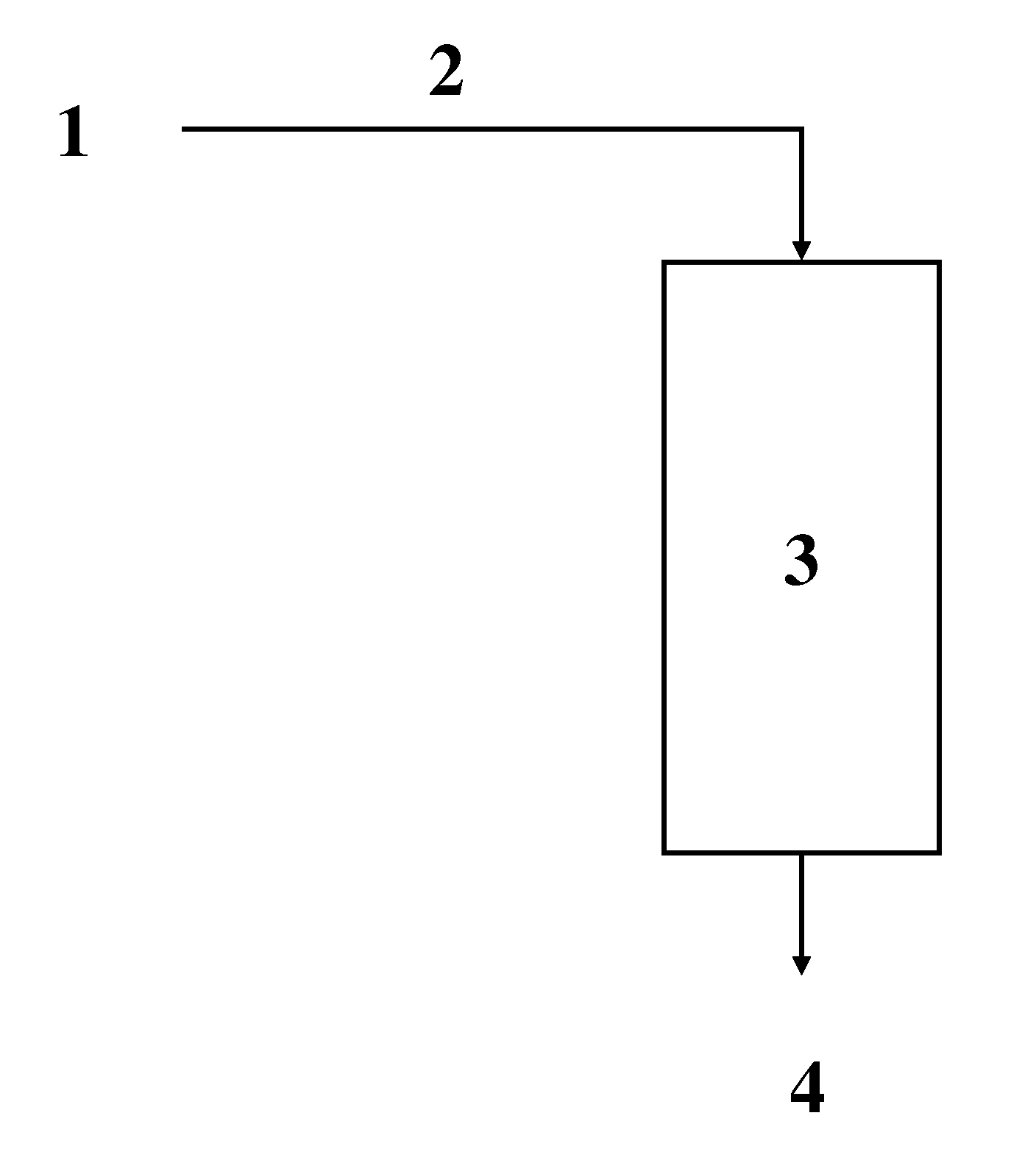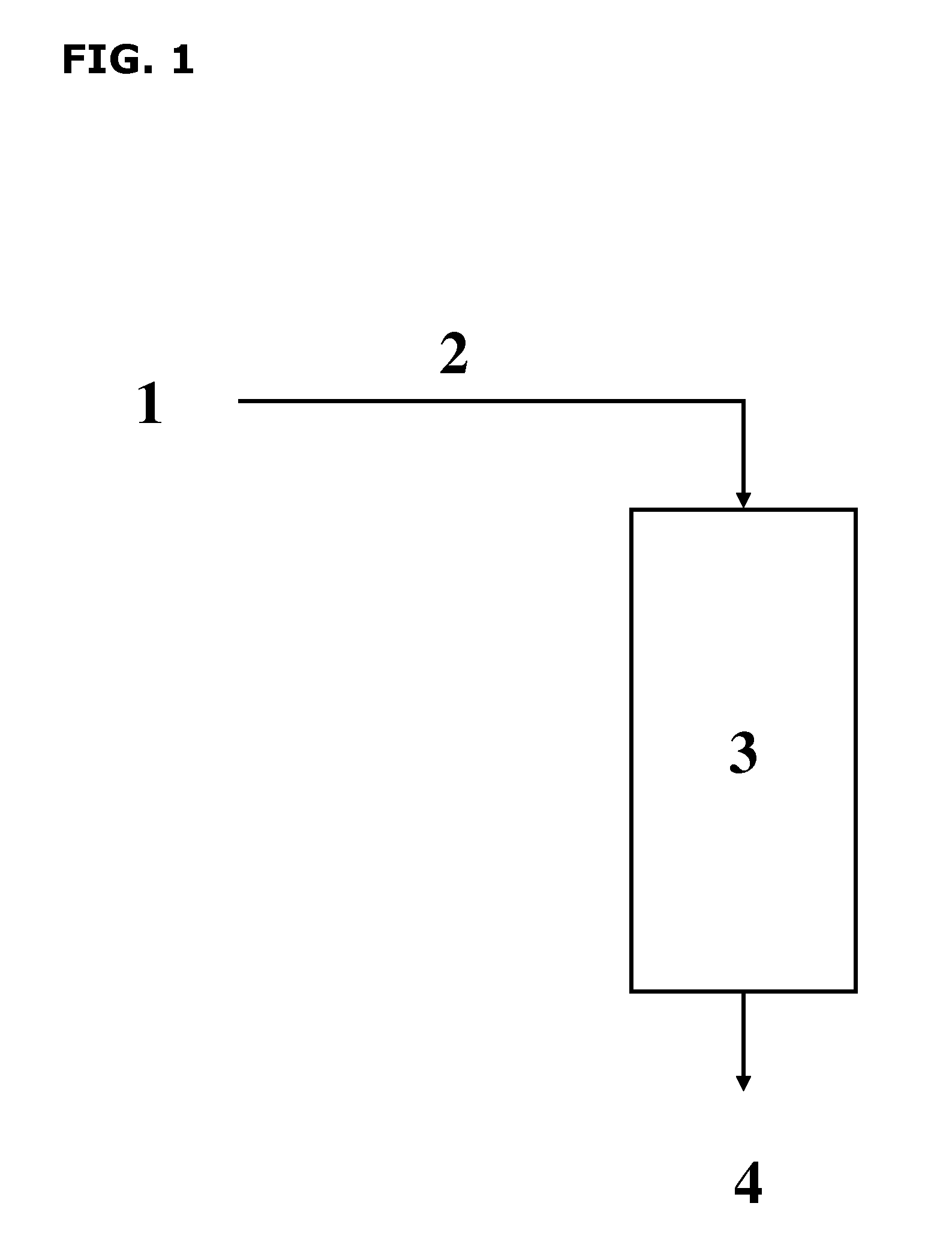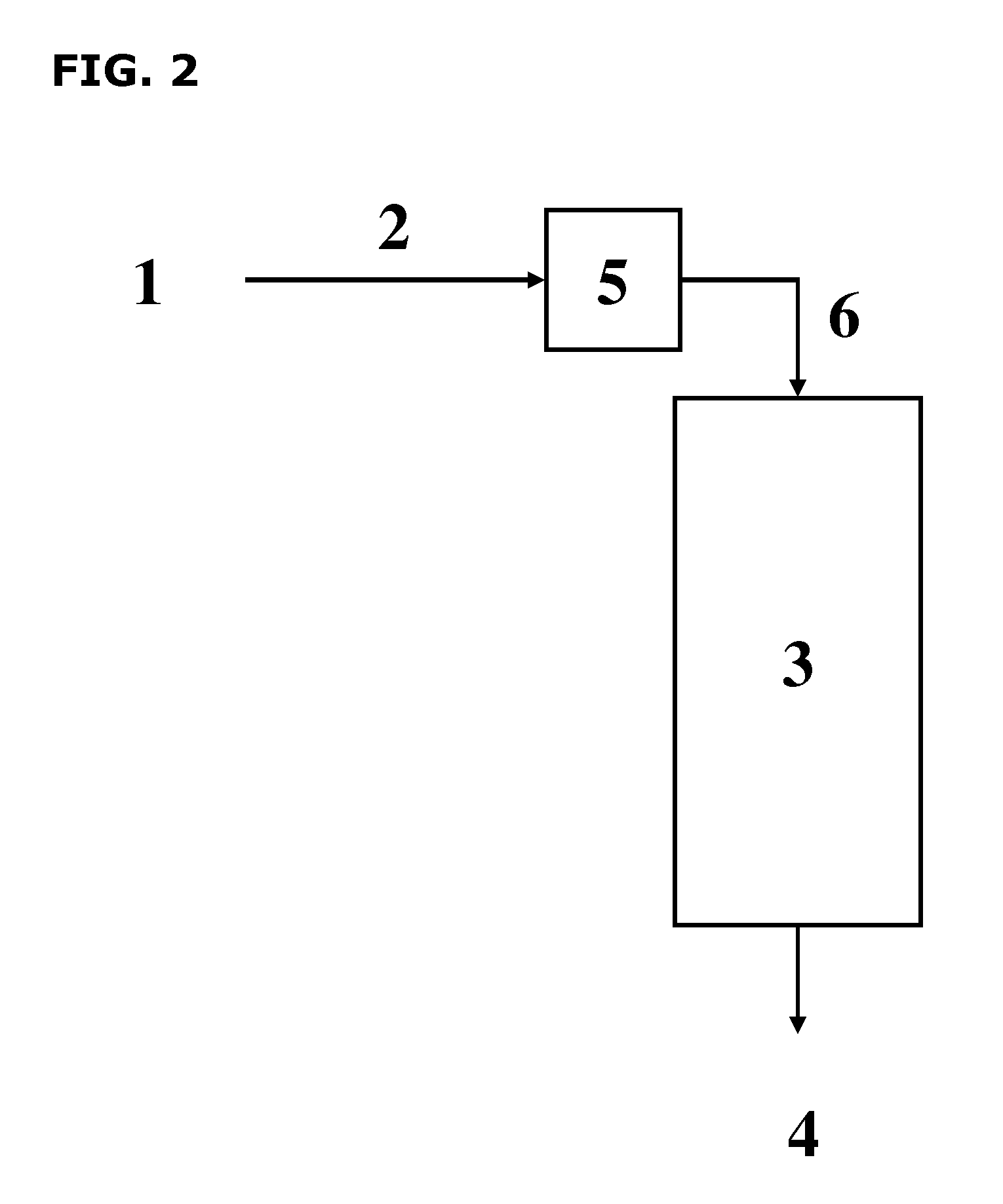Performance trapping mass and use thereof in heavy metal trapping
a technology of heavy metals and trapping mass, which is applied in the field of heavy metal trapping mass, can solve the problems of reducing the accessibility of mercury to the core of the gel alumina type support, and the inability of alumina gel type supports to be suitable for applications, so as to achieve the effect of reducing investment costs and purifying more effectively
- Summary
- Abstract
- Description
- Claims
- Application Information
AI Technical Summary
Benefits of technology
Problems solved by technology
Method used
Image
Examples
example a
Preparation of a Capture Mass M1 in Accordance with the Invention
[0090]The support for the capture mass M1 of the invention was prepared via a series of steps:
[0091]Preparation of an Alumina Gel, Shaping then Drying and Calcining
[0092]The alumina gel was synthesized via a mixture of sodium aluminate and aluminium sulphate. The precipitation reaction was carried out at a temperature of 60° C., a pH of 9, for 60 min and with stirring at 200 rpm. The gel obtained was mixed in a Z arm mixer to produce the paste. Extrusion was carried out by passing the paste through a die provided with an orifice with a diameter of 1.6 mm in the shape of a trilobe. The extrudates obtained were dried at 150° C. then calcined at 500° C.
[0093]The characteristics of the support obtained were:
[0094]BET surface area: 310 m2 / g;
[0095]Na content: 30 ppm (weight of Na2O);
[0096]Pore distribution, obtained by mercury porosimetry using a wetting angle of 140°:[0097]V1−V10=0.02 mL / g;[0098]V0.1−V1=0.02 mL / 100 g;[0099]...
example b
Preparation of a Capture Mass M2 in Accordance with the Invention
[0104]Preparation of an Alumina Gel, Shaping then Drying and Calcining
[0105]The support for the capture mass M2 of the invention was obtained under the conditions described in Example A.
[0106]Impregnation then Drying and Calcining
[0107]The impregnation and drying protocol was identical to that described in Example A. The calcining step was carried out in a dry atmosphere.
[0108]Sulphurization
[0109]The mass was sulphurized under the conditions described in Example A.
example c
Preparation of a Capture Mass M3 in Accordance with the Invention
[0110]Preparation of an Alumina Gel, Shaping then Drying and Calcining
[0111]The support for the capture mass M3 of the invention was obtained under the conditions described in Example A. A hydrothermal treatment was then carried out for 3 h at 650° C. in the presence of 30% water.
[0112]The characteristics of the support obtained were:
[0113]BET surface area: 130 m2 / g;
[0114]Na content: 10 ppm (weight of Na2O);
[0115]Pore distribution, obtained by mercury porosimetry using a wetting angle of 140°:[0116]V1−V10=[0117]V0.1−V1=0.2 mL / g;[0118]V0.01=0.6 mL / g;[0119]V0.005 / V0.03=3.
[0120]Impregnation then Drying and Calcining
[0121]The impregnation and drying protocol was identical to that described in Example A. The calcining step was carried out in a dry atmosphere.
[0122]Sulphurization
[0123]The mass was sulphurized under the conditions described in Example A.
PUM
| Property | Measurement | Unit |
|---|---|---|
| specific surface area | aaaaa | aaaaa |
| diameters | aaaaa | aaaaa |
| temperature | aaaaa | aaaaa |
Abstract
Description
Claims
Application Information
 Login to View More
Login to View More - R&D
- Intellectual Property
- Life Sciences
- Materials
- Tech Scout
- Unparalleled Data Quality
- Higher Quality Content
- 60% Fewer Hallucinations
Browse by: Latest US Patents, China's latest patents, Technical Efficacy Thesaurus, Application Domain, Technology Topic, Popular Technical Reports.
© 2025 PatSnap. All rights reserved.Legal|Privacy policy|Modern Slavery Act Transparency Statement|Sitemap|About US| Contact US: help@patsnap.com



